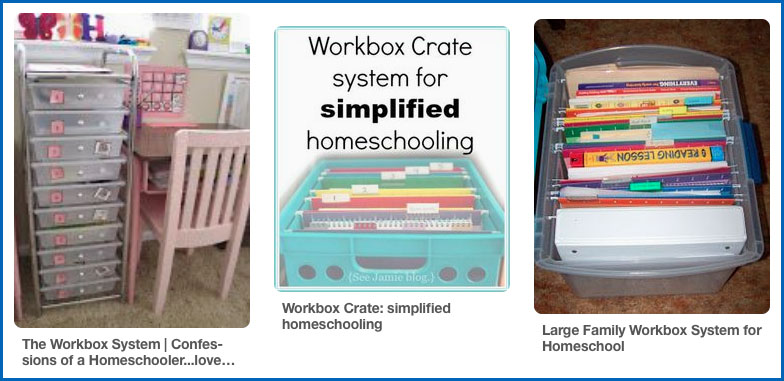You CAN Homeschool More than One Child
While homeschooling one child can sometimes be a difficult job, homeschooling multiple children can be a daunting task. In fact, one of our Calvert moms previously described it as “trying to juggle wet bars of soap”!
Since many of our families are navigating the current school year or planning for next year, we’ve put together some ideas and resources to help our families who are teaching more than one child at home.

School Doesn’t Have to Look Like School
Yes, Laura Ingalls Wilder and her sister Mary sat quietly at their desks in their one-room schoolhouse while Miss Beadle instructed ALL of the town’s students at various grade levels. This ambitious teacher certainly made it look easy!
While it is very important to set clear expectations and rules in your home learning space, you do not have to replicate a traditional classroom with neatly aligned desks. It’s important for children to work in a comfortable space that allows them to focus on their work, but still ask for assistance when needed.
Tip from a Calvert parent –
“We do math lessons at the kitchen table. Individual reading is usually on the couches or bean bag chairs. If the weather is nice, we often do science on the back patio – especially if we have a project that might get messy! Really, as long as the work is done and I know the kids have done their best, where they complete their work is their choice. However, if I notice that a child is repeatedly distracted by something in a room, I will direct them to finish at the kitchen table.”
Schedule, Schedule, Schedule
Creating a homeschool schedule for one child is not so difficult. Add on one or two additional children and the schedule can become more complex.
When creating your homeschool schedule, be sure to note each of your children’s strengths and weaknesses. It is sometimes best to schedule the most difficult subjects for the morning before students become tired. After lunch or after an outdoor exercise break are also good times for students to tackle more challenging work.
Be sure to alternate independent work with activities where you need to instruct or assist a child. Schedule subjects so that while one or two students are working independently, you are working directly with another child.
Don’t forget to consider each child’s natural sleep/wake cycle. Some students do their best work during the early morning hours. Take advantage of this time for one-to-one direct instruction, especially if you have an older student who enjoys sleeping in!
Finally, if you have a baby or toddler, nap time is a great opportunity to schedule direct instruction with an older sibling.
Remember that you can, and should, make modifications to your schedule, as needed, throughout the school year.
Tip from a Calvert parent –
“I am teaching 3 different grade levels and have been for the past 3 years. I begin the day with the oldest children’s Math instruction and give them their daily Math assignments. While my older children complete their Math work, I have a large block of time to work with my youngest child. We can complete most of his daily assignments during this block of time. Experiment and find what works for you. And most importantly, give it time. I find that it takes about a month before our school schedule runs most efficiently.”
Tip from a Calvert parent –
“I am teaching four different grade levels from Kindergarten through 5th Grade. Each child has work they can do independently and work to do with me. While one child is independently working, I work with one of the others. Sometimes my oldest may help the youngest with work while I take care of the 3rd grader. We also combine some projects for subjects like history, geography, or science so that all of the children are involved in the same activity.”
Use a Workbox System
While the workbox system does require a bit of advanced planning, many parents homeschooling multiple children find that it helps their day run smoothly.
The overall concept is to determine which assignments a student must complete on a given day. All assignments are divided by subject. Then determine the order in which the assignments must be completed.
Each assignment is then placed into boxes or drawers – one for each subject. The boxes or drawers should include the workbooks, texts, and any tools the child requires to complete the assignment. This eliminates the need for the student to make trips to supply closets for markers or wander around the house looking for glue.
The child starts working with the assignment in the first box or drawer and then moves on to the next. The important part of this system is to alternate the various assignments in each student’s drawer so that while one child is working independently, you can provide instruction to another child.
Workboxes are a great way for students to stay focused and monitor their progress throughout the day. This system also helps parents juggle the needs of multiple students.
Tip from a Calvert parent –
“We use work boxes. I order each child’s work so they alternate independent work and what I need to help with. If they get to a box and need help, but I am still busy with another sister, they look at or read a book while they wait. I don’t know if I could make it work without work boxes!”
See our Workboxes Pinterest board for ideas on how to set up a system for your family.
Keep the Little Ones Busy
While homeschooling can often be a challenge, add a toddler or preschooler to the mix and things can become a bit more complicated. Here are a few ideas to help save your sanity:
Create a toddler-proof homeschool area
The ideal situation is to do schoolwork in a closed room where the toddler can safely explore surroundings and stay busy. This allows you to focus on teaching an older child, without wondering what the little one is getting into in another room. If you’re not able to homeschool in an enclosed room, consider setting up some children’s gates.
Tip from a Calvert parent – “We homeschool in our finished basement. It allows me to interact with the baby and keep an eye on our toddler. Our basement is completely baby-safe and it’s stocked with toys, books, and busy boxes. It also has a desk for my older daughter and a couch for snuggling while reading.”
Create busy boxes or bags
Young children love to explore and they love new things! Create small boxes or bags full of educational activities, hands-on projects, crafts, and more. Alternate the bags and swap the contents regularly so your little one can have new activities each week.
See our Preschool and Toddler Activities Pinterest board for low-cost, easy to assemble ideas.
Make learning a family event
Be sure to include your little ones in read-aloud time, craft projects, science experiments (as appropriate), and group learning. It’s easy to modify activities to allow your younger children to participate. You’ll be surprised at how much they learn!
One Calvert mom told us she was shocked when her 3.5 year old son started telling a relative about the process of photosynthesis! While the child was playing, he was also absorbing a great deal of information from his older brother’s lessons.

Goal: Independence
As your children become more familiar with their schoolwork format and assignments, and especially as they age, encourage them to become more independent. Give your students positive praise when they show initiative to complete work on their own. Teach them organization skills and provide assistance with creating to-do lists and calendars. These skills are stepping stones for success in high school, college, and the workplace.
The most important thing to keep in mind is that there is no one magical solution that will work for every family. Be flexible and accept that there WILL be days when you don’t complete everything you had planned. That’s the great thing about “tomorrow” — you always have another chance!
If you need assistance with planning your homeschool schedule or teaching concepts or strategies, please do not hesitate to contact our team of experienced Education Counselors. Email us at EdCounselors@CalvertServices.org or call us at 1-888-487-4652 (option 2).
Sincerely,
The Calvert Education Counselors

